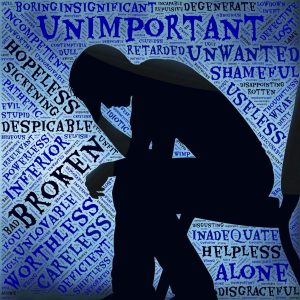You hear it all the time – someone experiences a minor setback or disappointment, and their response is to say “I’m so depressed.” This is categorically false; minor sadness or appropriate dissatisfaction about one’s circumstances does not Depression make. In actuality, depression is a serious chronic illness that can be a tremendous hindrance to living a happy and productive life – and it affects 14.8 million Americans over the age of 18, comprising a full 6% of the adult population here in the US. So what’s the difference between sadness, feeling blue and real, clinical depression?
Clinical depression is a mood disorder that causes long-lasting and profound sadness. Some describe having depression as feeling empty or hollow; the illness essentially strips away a person’s ability to see the beauty or joy in the world, causing them, instead, to fixate on their own perceived or real inadequacies and magnifying every small slight in their minds until the weight of the world becomes almost unbearably heavy.
The symptoms of depression are fairly standard, but they exist on a spectrum of severity. Depression causes feelings of anxiety, panic attacks, changes in sleep patterns (either sleeping too much or too little), rumination (perseverating on past grievances as though they are current problems), and changes in appetite (either eating too much or not eating enough). It causes pervasive feelings of worthlessness, and it even causes physical weakness, pain and lethargy, a result of your brain incorrectly drawing stronger connections to negatives than to positives. Depression often impedes on the sufferer’s ability to perform basic functions, like going outside, which can severely impact their ability to do their job properly, take care of themselves, and take care of their children. This is not a choice – someone who is in the throes of a depressive episode cannot simply “snap out of it” or “take a walk” to fix how they feel.
Sometimes, a person only experiences one episode of depression in his life, and does not need to continue psychiatric treatment after the episode resolves. More often than not, however, a person who has experienced one Major Depressive episode will experience another eventually, and should therefore continue treatment with a trusted medical professional indefinitely. Some forms of depression, especially those on the less-severe end of the spectrum I mentioned early, can be treated with talk therapy or Cognitive Behavioral Therapy, or CBT, which teaches you how to analytically look at your own patterns of thought and change them for the better. More severe depression may need to be treated with medication in conjunction with therapy, and these days, there are more options than ever before when it comes to medicines that treat different forms and levels of depression.
While someone who is in the midst of a depressive episode can feel like he is the only person in the world to experience such feelings, many people around the world suffer from the exact same feelings of unbearable sadness and emptiness. That’s why it’s so important that we start discussing and demystifying every mental illness. If more people understand what causes mental illness, and that it is chronic, invisible disease of the brain, exactly like diseases that affect other parts of the body, then there’s a much greater likelihood that people who become depressed will not be allowed to plummet into the depths of sorrow that isolation fosters.
Please continue checking this blog for future posts that will profile other mental illnesses – after all, no one should have to go through this alone.
